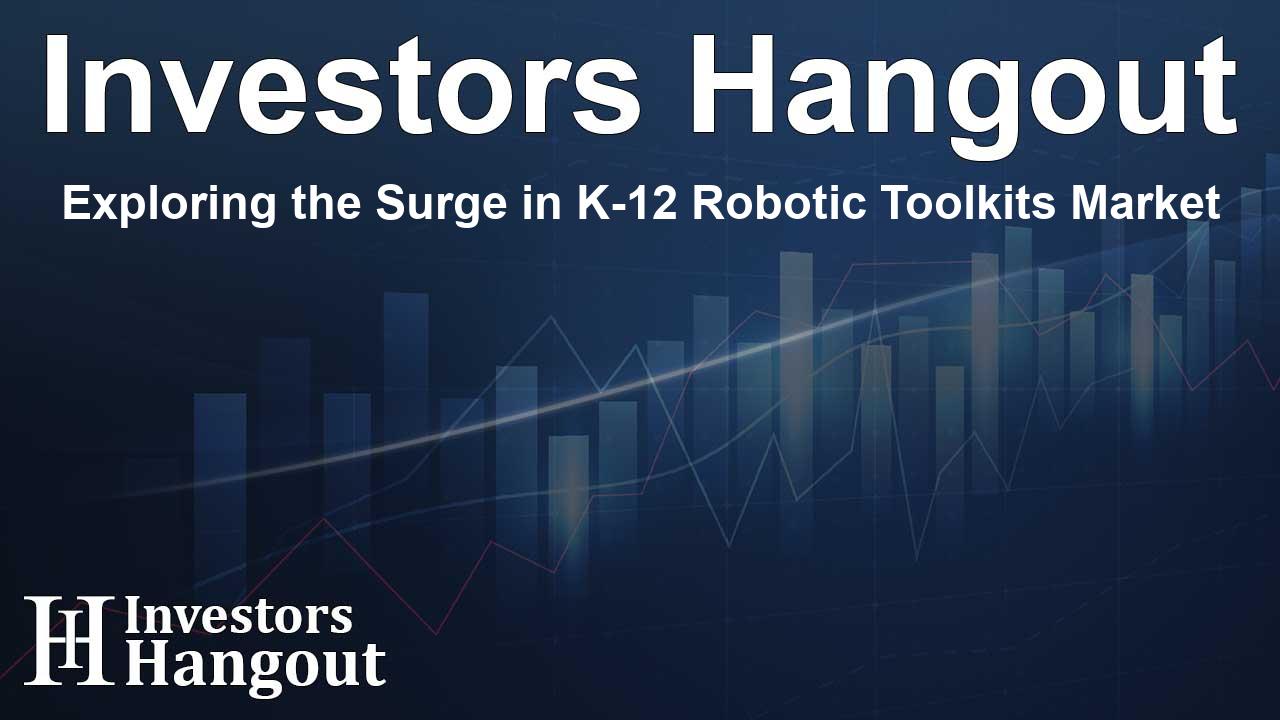Exploring the Surge in K-12 Robotic Toolkits Market

The Growing K-12 Robotic Toolkits Market
The global K-12 robotic toolkits market is projected to experience substantial growth in the coming years, with an estimated increase of USD 906.1 million from 2024 to 2028. This surge can primarily be attributed to the ongoing product premiumization alongside rapid advancements in artificial intelligence (AI), which is reshaping the educational landscape. As the demand for international schooling rises, the adoption of sophisticated robotic toolkits is becoming integral to modern education.
Market Growth Trends
During the forecast period, the market is expected to witness a compound annual growth rate (CAGR) of 25.72%. The impressive growth rate reflects trends towards enhanced educational tools that facilitate learning in science, technology, engineering, and mathematics (STEM). These tools not only support academic achievement but also prepare students for future careers in high-tech industries.
Key Drivers of Growth
One significant driver of this burgeoning market is the proliferation of international schools, which cater to a growing demographic of expatriates and rising income levels in both developing and developed nations. Many educational institutions are investing in K-12 robotic toolkits to enrich their curriculums, fostering an environment that promotes comprehensive development among students. This growth means that schools are increasingly providing their students with access to advanced learning materials, expanding opportunities in STEM and robotics.
Market Challenges
Despite the positive outlook, the K-12 robotic toolkits market faces considerable challenges. A primary concern is the high cost of advanced robotics kits, which can range from USD 130 to USD 10,000. Such pricing often limits accessibility for lower-income students and institutions in developing regions. Moreover, the delicate nature of robotic equipment necessitates careful handling, which can further escalate costs, making wider adoption a hurdle for many educational establishments.
Challenges in Product Accessibility
The premium pricing associated with advanced technological features makes it difficult for educational institutions to justify these expenditures, especially in regions with limited budgets. However, educational leaders are exploring innovative solutions to address these financial challenges while continuing to integrate technology in classrooms.
Market Segmentation and Insights
The K-12 robotic toolkits market encompasses various segments based on type, school level, and geography. With numerous players in this fragmented market, schools are presented with diverse options tailored to different educational levels from pre-K to higher grades. The toolkit offerings typically include modular components, sensors, and programming interfaces, allowing comprehensive learning opportunities in multiple subjects.
Regional Analysis
Regions such as North America, Europe, Asia-Pacific, and South America are witnessing varying degrees of market penetration, with North America leading at a 38% contribution. Educational institutions in these areas focus on integrating technology into their curriculums through practical applications that prepare students for the future workforce.
Companies in the Spotlight
Several notable companies are influential in the K-12 robotic toolkits market, including Amtek Co. Inc., LEGO System AS, Sphero Inc., and Makeblock Co. Ltd. These companies are known for their innovative products that cater to a diverse range of educational needs, ensuring students receive hands-on experience that reinforces theoretical learning.
Technological Integration in Education
As the demand for robotic toolkits grows, educational institutions are increasingly prioritizing the role of technology in learning. Emphasizing project-based and inquiry-based learning approaches, the use of sophisticated tools in classrooms can inspire creativity and enhance problem-solving skills. This shift towards a technology-driven education system not only prepares students for future careers in STEM fields but also cultivates a culture of collaboration and innovation.
Frequently Asked Questions
What is the expected market growth for K-12 robotic toolkits?
The global K-12 robotic toolkits market is expected to grow by USD 906.1 million from 2024 to 2028, reflecting a CAGR of 25.72%.
What are the main drivers for the growth in this market?
Key drivers include increased demand for international schools, product premiumization, and advancements in technology focused on enhancing STEM education.
What challenges does the K-12 robotics market face?
High costs of advanced robotic toolkits pose a significant barrier to adoption, particularly in lower-income educational settings.
Which regions are leading the K-12 robotic toolkits market?
North America currently leads the market with a 38% contribution, followed by Europe and Asia-Pacific.
Who are the major companies in the K-12 robotics market?
Key players include Amtek Co. Inc., LEGO System AS, and Sphero Inc., all of which provide a range of robotics tools and solutions for educational purposes.
About Investors Hangout
Investors Hangout is a leading online stock forum for financial discussion and learning, offering a wide range of free tools and resources. It draws in traders of all levels, who exchange market knowledge, investigate trading tactics, and keep an eye on industry developments in real time. Featuring financial articles, stock message boards, quotes, charts, company profiles, and live news updates. Through cooperative learning and a wealth of informational resources, it helps users from novices creating their first portfolios to experts honing their techniques. Join Investors Hangout today: https://investorshangout.com/
Disclaimer: The content of this article is solely for general informational purposes only; it does not represent legal, financial, or investment advice. Investors Hangout does not offer financial advice; the author is not a licensed financial advisor. Consult a qualified advisor before making any financial or investment decisions based on this article. The author's interpretation of publicly available data shapes the opinions presented here; as a result, they should not be taken as advice to purchase, sell, or hold any securities mentioned or any other investments. The author does not guarantee the accuracy, completeness, or timeliness of any material, providing it "as is." Information and market conditions may change; past performance is not indicative of future outcomes. If any of the material offered here is inaccurate, please contact us for corrections.